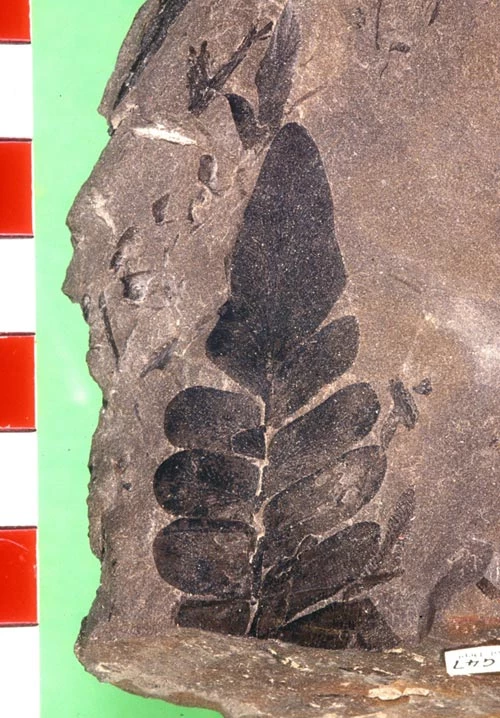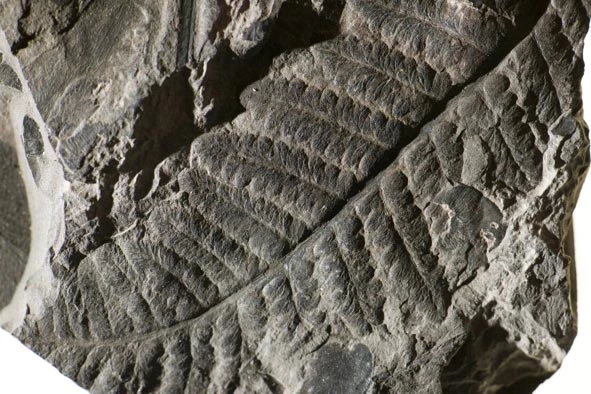Palaeozoic plant systematics
Current projects
Sternberg, from the upper Westphalian of the Radstock Coalfield, Avon. Fragment of a medullosalean frond.
(Corsin) Wagner. Fragment of frond of a marattialean fern, from the late Westphalian of the South Wales Coalfield.
- Medullosales.
This was a major group of seed-plants of the late Carboniferous tropical wetlands. As well as representing a significant proportion of the biomass of this ancient wetland vegetation, they were remarkable in having produced the largest-known seeds, sometimes more than 11 cm long. They were also sensitive to environmental change and so a very useful plant group for understanding changing habitats. Work includes studies on the morphology, epidermal anatomy and biochemistry of the plants, and is being done in collaboration with colleagues from Cape Breton University (Sydney, Nova Scotia), the Natural History Museum (London), the Czech Geological Survey (Prague) and the Bulgarian Academy of Sciences (Sofia). - Marattiales.
This was an important group of tree-ferns in these wetlands. This is combining morphological studies with studies on the spores that they produced, to revise the systematics of these plants. The project involves collaboration with an extensive network of specialists from the Field Museum (Chicago), Cape Breton University (Sydney, Nova Scotia), the Czech Academy of Sciences (Prague) and the West Bohemian Museum (Plsen).
Past projects in this research area
The Section (together with colleagues from the Natural History Museum and Birmingham University) have recently revised the systematics of the Carboniferous seed-plant Eremopteris.

